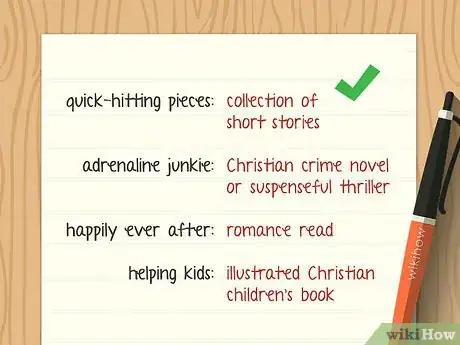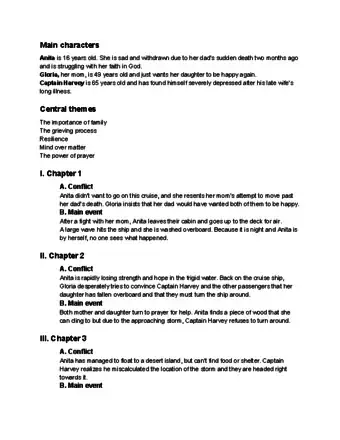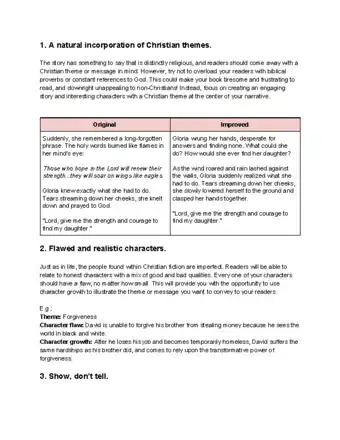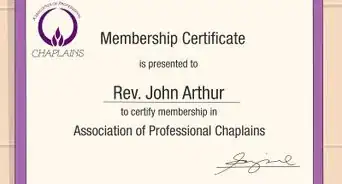This article was co-authored by wikiHow Staff. Our trained team of editors and researchers validate articles for accuracy and comprehensiveness. wikiHow's Content Management Team carefully monitors the work from our editorial staff to ensure that each article is backed by trusted research and meets our high quality standards.
There are 7 references cited in this article, which can be found at the bottom of the page.
This article has been viewed 22,957 times.
Learn more...
Writing a book or even a short story is no small feat, especially when you add in religion. Christian fiction can be incredibly moving and powerful if done well. If you want to try your hand at writing a faith-based story, start by creating a clear outline. Then, weave Christian messages and values throughout the piece, and get feedback from readers and fellow writers before you go to publish it.
Steps
Outlining and Writing Your First Draft
-
1Choose what format you want to use to tell your story. Think about who your story is for, what you want it to accomplish, and what types of fiction you personally enjoy to help you decide the genre for your story. For example, if you love guiding young Christians, you might want to write a children's book, whereas if you like the hero and villain motif, you could write a Christian crime novel.[1]
- Try to get as specific as possible. The narrower your niche, the more focused and impactful your writing will be. For example, instead of writing for women, write for women in their 30s going through a divorce.
- Take into account your own faith or personal experiences when choosing a theme or message. Writing what you know is often the most successful way to author a book.
- Other formats can include a script, short story, graphic novel, etc.
How to Pick a Format for Your Christian Fiction
If you like quick-hitting pieces, consider doing a collection of short stories or prose.
If you're an adrenaline junkie, try a Christian crime novel or suspenseful thriller.
If you live for happily ever after, go for a romance read.
If your passion is helping kids, write an illustrated Christian children's book.
-
2Be subtle in your Christian influences. Do not make it to abrupt or obvious. Eg: Give your characters names from either Christian figures or things pertaining to Christianity. I.E. Grace, etc.Advertisement
-
3Get inspiration from the Bible for different elements of your story. If you aren’t sure what exactly you want your book to be about, flip through the Bible to get ideas. Consider basing some of the characters off of the disciples or turning one of the themes of a parable into your storyline.[2]
- For example, you could take the coming-of-age motif in the prodigal son parable and adapt it for your book.
- Another creative option is to tell the story of a primary Bible character in a modern-day setting. Imagine the traitor Judas as an investment banker in New York City during the financial crisis, for instance.
- Keep a running list of all of your ideas throughout the day. Jot them down in the notes app on your phone or on a piece of paper.
-
4Create a mind map to brainstorm the main ideas for your story. Think of a mind map as a visual diagram of your piece. In the center, you'll write a 1 to 2 sentence summary of the entire story. Then add branches coming off of the center with key concepts, themes, plot lines, etc. Create more branches off of the second level with even more details and so on.[3]
- You can draw a mind map by hand on a large sheet of paper or use online software that will create a digital version for you.
- This step should be a free flow of thoughts. Write down whatever you think of without censoring yourself.
- For example, the center bubble for a romance novel might be "Jane, who's a Christian, falls in love with an atheist man." The next branches might be "characters," "themes," and "main events."
- You can make as many mind maps as you'd like. For instance, you can make separate mini diagrams for each character.
-
5Organize and expand on your mind map to make it a fully developed outline. This outline will guide you as you write and help make the process more manageable. Begin organizing the subtopics of your mind map into a rough table of contents. Then lay out all of the details for each subtopic in its section, fleshing out any that need more information or planning.[4]
- For instance, if one of your branches was "main events," arrange those events into the order that they'll occur in. Then group the characters, themes, or other plot details under the corresponding section.
- The more detailed your outline is before you begin writing, the easier it will be to write.
-
6Work sequentially through your book, starting with the first chapter. Jumping around not only gets confusing, it also slows you down and weakens your writing. To create a good flow for the reader and to stay on track, write your book in order, no matter what type of book it is, like a novel or a children's book. Begin with Chapter 1, then move through to Chapter 2, and so on.[5]
- The exception to this is the introduction. Leave that until the end so you can reflect on the whole book when you write it.
- Create self-imposed deadlines for each chapter or section to hold yourself accountable. For example, say you'll have Chapter 1 finished in 2 weeks, then Chapter 2 in another 2 weeks.
-
7Schedule time to write a little bit each day. Consistent writing is key to producing, and eventually finishing, your book in a timely manner. Block off a chunk of time every single day to sit down and write, even if it’s just 30 minutes. Write it in a planner or put it in the calendar app on your phone.
- Turn off all distractions during your scheduled writing time. Find a quiet place where you can be alone and silence your phone.
- Write even when you don’t feel like it or when it’s difficult.
Tips for Beating Writer's Block
Go for a walk to clear your head.
Change up your scenery by writing in a new spot, like at a coffee shop if you usually work at your desk.
Spend 5 minutes freewriting to energize your brain. Write down anything and everything that comes to your mind.
Read something from your favorite author for inspiration.
Incorporating Christian Themes
-
1Add religious elements into your writing naturally. Don’t try to force your Christian message into every sentence, or even every chapter. If your faith is important to you as a writer, it will come through in your writing, story, and characters without having to overload your book with religious references or cliches.[6]
- Sprinkle your Christian theme throughout the book to have the most impact. For instance, one chapter might have a prayer in it and the next might mention a conversation the main character had with God.
- Don’t beat your readers over the head with your message. It will dilute the value of what you have to say and make for a frustrating read.
-
2Avoid making your characters too “perfect” so your story is realistic. It can be easy to play too much into black-and-white thinking, where the religious characters are purely good and the nonreligious ones are purely evil. Create honest characters that the readers can relate to. Make them human, with a mix of good and bad qualities.[7]
- Every character needs to have a flaw, no matter how small, in order to be taken seriously.
- For example, maybe your main character, Mary, is a born-again virgin, yet she has a nasty habit of ghosting the men she dates when she loses interest.
-
3Use the “show, don’t tell” technique like the gospel writers did. Rather than telling the reader what’s going on, show them by describing events and relationships in a way that brings them to life and gets the reader more emotionally invested. This is what the gospel writers, like John, did to tell the story of Jesus in the Bible.[8]
- One key way to do this is by narrating the book in an active voice instead of recounting what happened in a passive voice.
- An example of “showing” would be a sentence like, “I was sitting on the couch when I heard the noise.” Make it “telling” by saying, “Snuggled up with a cozy blanket, I reached for my cup of coffee, only to knock it over suddenly when a sharp screeching pierced the air.”
- Adding more dialogue can help when you’re trying to avoid telling a character’s feelings. For instance, rather than saying "Sara felt sad," you can say, "'I can't do this anymore. My world is falling apart,' Sara wept."
-
4Keep the underlying Christian message simple and down-to-earth. Readers will get frustrated if you're using a lot of lofty language and preaching abstract religious concepts. Instead, explain an important idea by simplifying it into something that everyone can relate to easily. Use a conversational voice so readers of all levels of faith can understand what you're trying to express, too.[9]
- For example, in a section about a sermon the fictional preacher is delivering, instead of writing out the entire sermon complete with Bible verses, focus on what the main character is thinking or feeling or how they're reacting to the message.
- Think about how you can subtly connect the reader to your theme without preaching it to them. For instance, instead of lecturing the reader on the importance of forgiveness, show the positive benefits of it through your character's actions, like if someone forgives their sister for saying something mean and their relationship becomes stronger because of it.
Polishing Your Story
-
1Self-edit your story to make sure it maintains the Christian theme. Only you will be able to tell if your completed piece achieves your original goal, whether that was to teach a lesson from the Bible or to show the power of prayer. Once you’ve finished writing, read through the entire thing from start to finish, checking that you were successful in conveying your Christian message or values.[10]
- You may want to wait a couple of days in between finishing the story and self-editing. That way, you have a fresh set of eyes to look at it.
- If you want to copyedit your piece and proofread for grammatical errors, do that in a separate read-through. It’s best to focus on one thing at a time.
Tips for Better Self-Editing
Read the story aloud to yourself. Does it flow smoothly? Does it sound natural and easy to read?
Make sure you use the active voice as much as possible. Keep an eye out for passive sentences you can rephrase.
Break long paragraphs into smaller ones. Do the same with run-on sentences.
Check that your Christian message is consistent. Is it as clear or as powerful as you'd like?
-
2Ask both your Christian and non-Christian friends to review your work. This will give you balanced feedback on your piece, and you’ll learn how 2 very different audiences react to your story. Keep an open mind when listening to constructive criticism and try to incorporate edits from both sides to ensure your story appeals to a broader audience.
- You don’t have to agree with or use every piece of feedback. Pick and choose what you think is helpful and what is irrelevant or goes against your values. For example, a non-Christian friend might complain that there are too many Bible verse quotes in your book. However, if the inclusion of those quotes was purposeful, you might disregard that comment.
-
3Get feedback from other Christian writers online or in writer’s club. Since Christian fiction writers are such a niche group, they tend to stick together. There are a few websites devoted solely to the genre and the people who write it, and they offer discussion forums where you can talk with other authors and ask for tips or advice.
- Two popular websites to use are http://www.christianwritingtoday.com and https://www.faithwriters.com.
- You can also join a Christian writer’s club in your area for face-to-face meetings. Ask your local bookstore or library if they know of any.
- To ask for input on a part of your story, you might say something like, “Hey fellow writers! I can’t decide if this passage about praying for a sick parent is too cliche. What do you think?”
-
4Submit your manuscript to a publisher specializing in Christian books. Many large publishing houses have Christian divisions. Look on their website to find out if they accept unsolicited submissions and for instructions on how to turn in your manuscript.
- Consider hiring a literary agent to help you get your book published. They’ll create a book proposal to submit to publishing houses and may have connections in the industry to speed up the process.
- You can also self-publish your book. Some publishers provide self-publishing help for authors who are less experienced or you can hire a professional editing service to help polish your book before you publish it.
- To self-publish, you can upload your book as an e-book to a site like Amazon, or you can use a printing-on-demand service. Send your file to a printer who will then produce copies as they're ordered.
Sample Mind Map, Outline, and List of Christian Fiction Characteristics
References
- ↑ https://writetodone.com/pick-right-genre-novel/
- ↑ https://www.dailywritingtips.com/using-the-bible-for-writing-ideas/
- ↑ https://thinkwritten.com/mind-map-your-novel/
- ↑ https://thinkwritten.com/mind-map-your-novel/
- ↑ https://writetodone.com/write-your-book/#tab-con-8
- ↑ https://www.deviantart.com/josephblakeparker/art/5-Tips-for-Writing-Religious-Fiction-538738195
- ↑ https://www.dailywritingtips.com/using-the-bible-for-writing-ideas/
- ↑ http://www.godlywriters.com/gospel-writers-knew-show-dont-tell/
- ↑ https://www.dailywritingtips.com/using-the-bible-for-writing-ideas/











































































